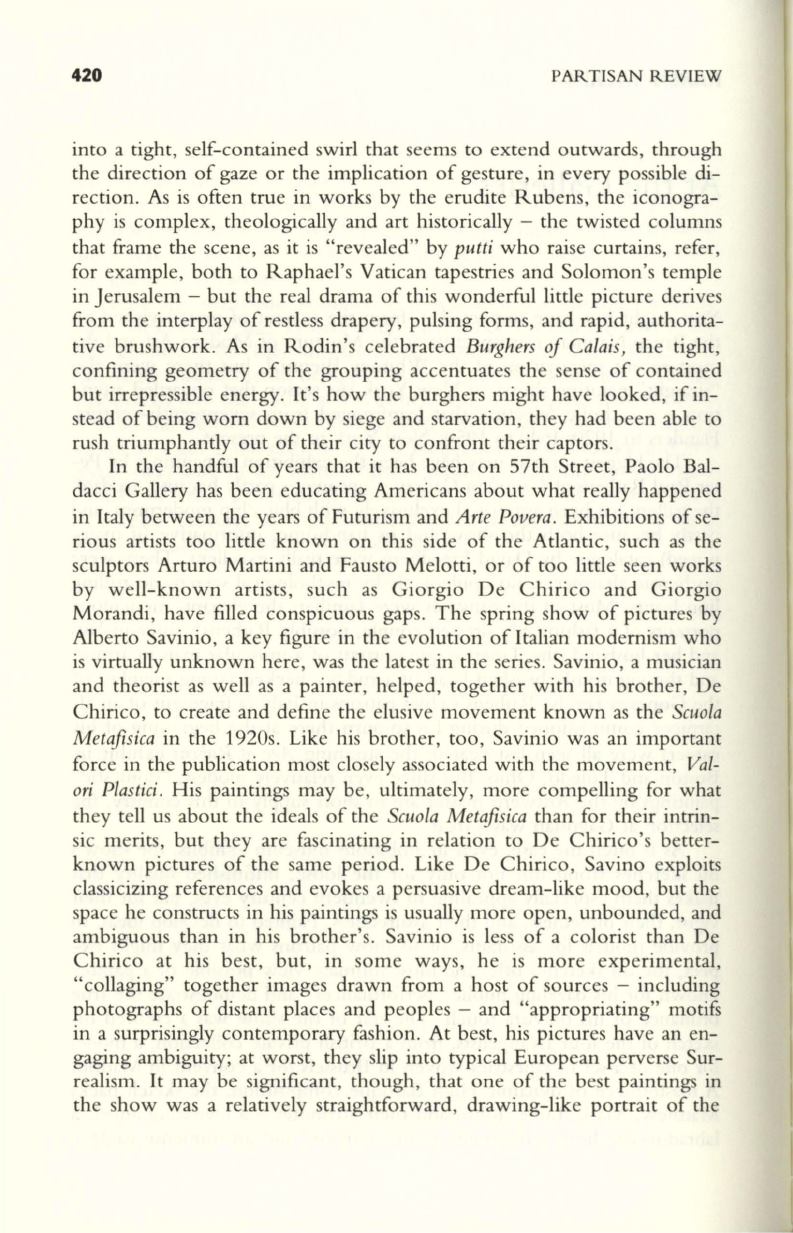
420
PARTISAN REVIEW
into a tight, self-contained swirl that seems to extend outwards, through
the direction of gaze or the implication of gesture, in every possible di–
rection. As is often true in works by the erudite Rubens, the iconogra–
phy is complex, theologically and art historically - the twisted columns
that frame the scene, as it is "revealed" by
putti
who raise curtains, refer,
for example, both to Raphael's Vatican tapestries and Solomon 's temple
in Jerusalem - but the real drama of this wonderful little picture derives
from the interplay of restless drapery, pulsing forms, and rapid, authorita–
tive brushwork. As in Rodin's celebrated
Burghers of Calais,
the tight,
confining geometry of the grouping accentuates the sense of contained
but irrepressible energy. It's how the burghers might have looked, if in–
stead of being worn down by siege and starvation, they had been able to
rush triumphantly out of their city to confront their captors.
In the handful of years that it has been on 57th Street, Paolo Bal–
dacci Gallery has been educating Americans about what really happened
in Italy between the years of Futurism and
Arte Povera
.
Exhibitions of se–
rious artists too little known on this side of the Atlantic, such as the
sculptors Arturo Martini and Fausto Melotti, or of too little seen works
by well-known artists, such as Giorgio De Chirico and Giorgio
Morandi, have filled conspicuous gaps. The spring show of pictures by
Alberto Savinio, a key figure in the evolution of Italian modernism who
is virtually unknown here, was the latest in the series. Savinio, a musician
and theorist as well as a painter, helped, together with his brother, De
Chirico, to create and define the elusive movement known as the
Scuola
Metajisica
in the 1920s. Like his brother, too, Savinio was an important
force in the publication most closely associated with the movement,
Val–
ori Plastici .
His paintings may be , ultimately, more compelling for what
they tell us about the ideals of the
Scuola Metajisica
than for their intrin–
sic merits, but they are fascinating in relation to De Chirico's better–
known pictures of the same period. Like De Chirico, Savino exploits
classicizing references and evokes a persuasive dream-like mood, but the
space he constructs in his paintings is usually more open, unbounded, and
ambiguous than in his brother's. Savinio is less of a colorist than De
Chirico at his best, but, in some ways, he is more experimental,
"collaging" together images drawn from a host of sources - including
photographs of distant places and peoples - and "appropriating" motifs
in a surprisingly contemporary fashion. At best, his pictures have an en–
gaging ambiguity; at worst, they slip into typical European perverse Sur–
realism. It may be significant, though , that one of the best paintings in
the show was a relatively straightforward, drawing-like portrait of the


